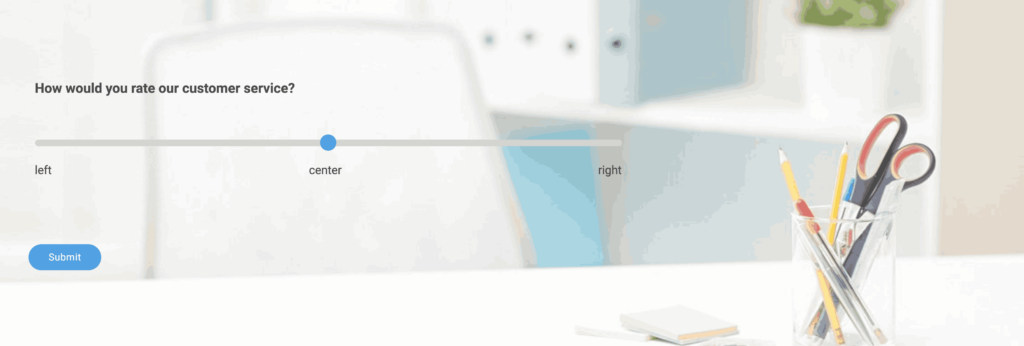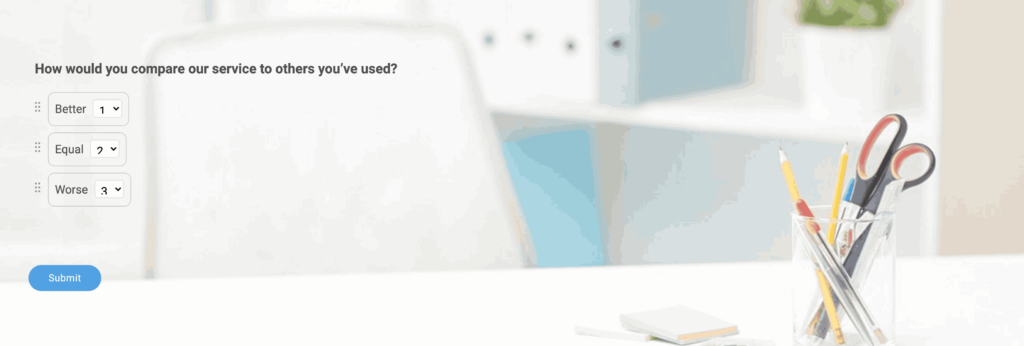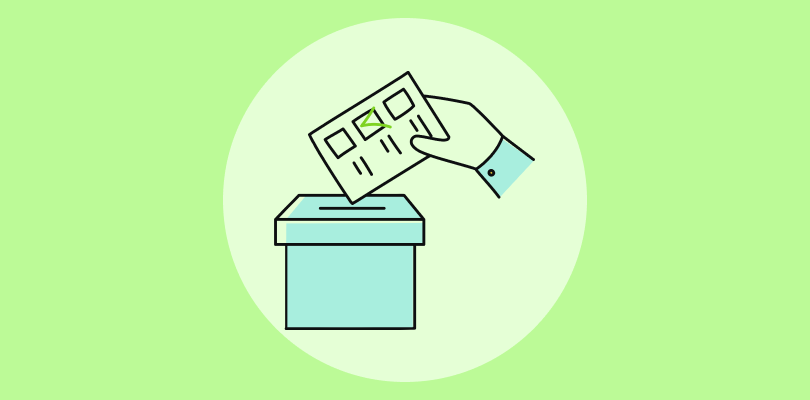
Surveys are a powerful tool for gathering information and understanding people’s opinions. But what if the very questions you ask subtly sway those responses?
Believe it or not, even seemingly innocuous wording can introduce bias, leading to skewed and misleading data.
In this blog post, we’ll explore the different ways bias can creep in, how to identify it, and, most importantly, how to craft fair, balanced questions that yield accurate results.
Let’s begin!
But first, here’s a quick tutorial on survey creation if you are unfamiliar with the process:
Watch: How to Create a Survey Using ProProfs Survey Maker
What Are the Types of Biased Survey Questions?
Crafting surveys can feel straightforward – ask a question, get an answer. But what if the way you ask the question subtly nudges respondents in a certain direction? This is where bias creeps in, twisting your results and painting an inaccurate picture.
Let’s explore the different ways bias can sneak into your survey questions. By understanding these pitfalls, you can design fair, balanced surveys that yield trustworthy data.
1. Question Order Bias
The sequence in which you ask your questions can have a surprising influence on responses. Earlier questions can set a context that affects how respondents interpret and answer subsequent ones.
For instance, if you ask about satisfaction with customer service before overall satisfaction, respondents might let their feelings about customer service color their overall rating. A bad service experience might sour someone’s impression of everything, even if the product itself is great.
To avoid this, shuffle the order or group thematically similar questions together.
2. Leading Question Bias
Ever felt like someone was putting words in your mouth? That’s what leading questions do. They subtly guide respondents toward a particular answer with suggestive wording. For example, asking, “Don’t you agree that our new policy is beneficial?” nudges respondents to say “yes,” even if they have reservations.
Leading questions are framed in a way that leaves little room for disagreement and pushes respondents towards a positive response. This can inflate positive feedback and skew your data.
Instead, use neutral wording and avoid phrasing the question as a statement.
3. Loaded/Assumptive Questions
Loaded questions sneak in assumptions that might not be true for everyone. It’s like asking, “Why do you think our service is the best in the market?” This assumes the respondent already thinks your service is the best, which may not be the case. These questions force respondents into a corner, leading to inaccurate answers.
Instead, ask open-ended questions that allow for a range of responses, like “What are your thoughts on our customer service?”
4. Double-Barreled Questions
These questions try to cram two questions into one, creating confusion. For example, “How satisfied are you with the price and quality of our product?” These questions combine multiple issues, making it impossible to give a clear answer. Your data ends up muddled because it’s unclear which part of the question the respondent is addressing.
So, instead, ask one question at a time:
– “How satisfied are you with the price of our product?”
– “How satisfied are you with the quality of our product?”
5. Absolute Questions/Dichotomous Questions
These questions force respondents into an all-or-nothing scenario, often not capturing the full spectrum of their opinions. For instance, “Do you always use our product?” only allows a yes or no answer, ignoring the nuances of occasional use. This ignores the possibility of someone feeling neutral or needing more time to form an opinion and can lead to frustration and less accurate data. Provide a wider range of answer choices, including a neutral option.
6. Acquiescence Bias
Some people just tend to agree with statements, especially if they’re phrased positively. This is acquiescence bias at work. For example, in a series of statements like “I am satisfied with my job,” respondents might agree more often than they would with negatively phrased statements. This can inflate positive responses and distort your data.
Balance positive and negative statements, or use a neutral response scale.
7. Ambiguous / Vague Questions
Unclear questions lead to misinterpretations. Asking “How often do you use our product?” without specifying a time frame (daily, weekly, monthly) leaves respondents guessing. Their answers could vary wildly, making it hard to draw reliable conclusions. Phrase your questions clearly and provide context when necessary.
8. Multiple Answer Questions (Unclear)
If a question allows for multiple answers but doesn’t make this clear, respondents can get confused. This could lead to incomplete answers or choosing only the first option. Specify if multiple choices are allowed and consider offering a “select all that apply” option.
9. Jargons
Avoid technical terms or industry jargon that not everyone understands. It can alienate respondents who aren’t familiar with the lingo. For example, the question “How do you rate our product’s UX/UI?” assumes everyone knows what UX/UI means. If they don’t, they might guess or skip the question, and your data will be unreliable. Use plain language everyone can grasp.
10. Double Negatives
Double negatives are brain twisters. Questions like “Do you not disagree that our product is the best?” can leave respondents scratching their heads. They might misinterpret the question, leading to incorrect or unclear answers.
Instead, you may ask, “How was your experience with our product?” to keep a neutral tone.
11. Poor Answer Scale Options
Scales that are unbalanced or lack enough options can skew data. For example, a scale with “Good, Very Good, Excellent” doesn’t allow for negative or neutral responses. This forces respondents to choose a positive option, even if they don’t feel that way, which can misrepresent their true opinions. Provide a balanced scale with neutral options and a clear range of responses.
12. Confusing Answer Scale Formatting
Inconsistent or unclear answer scales can trip up respondents. Imagine a survey where one scale has 1 as “very satisfied” and 5 as “very dissatisfied,” followed by another where 1 is “strongly disagree” and 5 is “strongly agree.” This inconsistency can confuse respondents and lead to incorrect selections.
13. Social Desirability Bias Questions
Questions about sensitive topics might lead respondents to answer in a way they think is socially acceptable rather than being honest. Asking, “How often do you donate to charity?” might make respondents overstate their charitable actions to appear more generous.
Consider phrasing the question differently or anonymizing responses.
14. Assimilation Bias
This occurs when previous questions influence answers. For example, following a series of positive questions about a product with a general satisfaction question might lead to an unduly positive response, as respondents’ answers are swayed by the earlier context.
Mix up the question order and avoid establishing a pattern.
15. Demand Characteristics Bias Questions
These questions make it obvious what the surveyor wants to hear, leading respondents to tailor their answers to meet those expectations.
Asking, “How much do you enjoy our highly rated customer service?” clearly signals that a positive answer is expected, which can skew the results.
16. Contrast Effect
When responses are influenced by the contrast between two questions, this is known as the contrast effect. For instance, asking about satisfaction with a high-quality product before a low-quality product might make the low-quality product seem worse by comparison. This can lead to more extreme responses than if the questions were asked in isolation.
50 Examples of Biased Survey Questions
Here are some additional examples of biased survey questions, categorized by the type of bias they introduce:
1. Question Order Bias
- “How satisfied are you with our customer service?” Followed by: “How satisfied are you with our product quality?”
- “How do you feel about our recent update?” Followed by: “How likely are you to recommend our product to others?”
- “Did you find the checkout process easy?” Followed by: “How would you rate your overall shopping experience?”
- “How was your experience with our technical support?” Followed by: “How satisfied are you with our overall customer support services?”
2. Leading Question Bias
- “Don’t you agree that our new policy is beneficial?”
- “Wouldn’t you say our product is the best on the market?”
- “Isn’t our customer support team amazing?”
3. Loaded/Assumptive Questions
- “Why do you think our service is the best?”
- “How often do you enjoy our excellent promotions?”
- “What makes our product superior to others you’ve tried?”
4. Double-Barreled Questions
- “How satisfied are you with our product quality and customer service?”
- “Do you find our app easy to use and helpful?”
- “Are you happy with your salary and job role?”
5. Absolute Questions/Dichotomous Questions
- “Do you always use our product?”
- “Have you never experienced any issues with our service?”
- “Do you completely agree with our company policies?”
6. Acquiescence Bias
- “I am satisfied with my job. Agree or Disagree?”
- “Our product meets all your needs. Agree or Disagree?”
- “You find our customer service helpful. Agree or Disagree?”
7. Ambiguous/Vague Questions
- “How often do you use our product?”
- “Is our service good?”
- “Do you like our new feature?”
8. Multiple Answer Questions
- “Which of these features do you use?” (without specifying multiple choices allowed)
- “What benefits do you value most?” (without specifying multiple choices allowed)
- “What channels do you prefer for customer support?” (without specifying multiple choices allowed)
9. Jargon
- “How do you rate our product’s UX/UI?”
- “Do you think our SLA is effective?”
- “How satisfied are you with our agile methodology?”
10. Double Negatives
- “Do you not disagree that our product is the best?”
- “Is it not true that you don’t dislike our service?”
- “Do you not think our pricing is not unreasonable?”
11. Poor Answer Scale Options
- “How would you rate our product? (a) Excellent (b) Very Good (c) Good”
- “How was your experience? (a) Great (b) Good (c) Average”
- “Rate our service: (a) Amazing (b) Satisfactory (c) Poor”
12. Social Desirability Bias Questions
- “How often do you donate to charity?”
- “Do you recycle regularly?”
- “Do you always follow a healthy diet?”
13. Demand Characteristics Bias Questions
- “How much do you enjoy our highly rated customer service?”
- “How valuable do you find our award-winning product?”
- “How beneficial are our new and improved features?”
14. Hypothetical Bias
- “If we were to improve our product, would you be more satisfied?”
- “Would you recommend our product if we added more features?”
- “If we offered a discount, would you purchase more frequently?”
15. Recall Bias
- “How satisfied were you with our product six months ago?”
- “Can you recall how often you used our service last year?”
- “Do you remember the last time you had an issue with our product?”
16. Social Bias
- “Do you consider yourself a loyal customer?”
- “Are you one of our top users?”
- “Do you always follow our updates and newsletters?”
17. Loaded Presumption
- “Why did you enjoy our latest update?”
- “What made our service better than others you have used?”
- “How has our new feature improved your experience?”
- “Why do you prefer our product over the competition?”
What Are the Advantages & Disadvantages of Biased Survey Questions?
It’s important to note that biased survey questions are generally discouraged because they can skew data and lead to inaccurate results. However, there can be a few situations where they might be used strategically, with extreme caution.
Here’s a breakdown of the advantages and disadvantages:
A. Advantages
- Increased Response Rates: Sometimes, subtly leading a question towards a positive response can encourage participation. For instance, “Do you find our new product to be helpful?” might have a higher response rate than “What are your thoughts on our new product?” (This should be used sparingly and only if the goal is to gauge general interest, not gather unbiased feedback).
- Directing the Focus: In some cases, a leading question can steer respondents towards a specific aspect you want to evaluate. For example, “Did our recent marketing campaign effectively raise brand awareness?” This focuses on brand awareness, even if other aspects, like sales, weren’t necessarily addressed. (Use this cautiously; ensure you gather well-rounded feedback through other questions).
B. Disadvantages
- Inaccurate Data: The biggest drawback is skewed data. Biased questions can nudge respondents towards certain answers, creating a misleading picture of opinions and experiences.
- Wasted Resources: If your data is inaccurate, the time and resources invested in the survey are wasted. You might make decisions based on false information.
- Loss of Trust: If respondents feel manipulated by biased questions, they might lose trust in the survey and the organization conducting it. This can damage your reputation for conducting fair research.
- Limited Insights: Biased questions can limit the range of insights you gain. You might miss out on valuable unforeseen feedback that could be crucial for improvement.
What Factors Lead to Biased Survey Questions?
Biased survey questions affect data negatively in almost all cases, so why do they still exist? Where exactly do these biases sneak in?
Here are some common factors that can lead to biased survey questions:
A. Unintentional Bias
- Our Own Opinions: We all have our own perspectives and beliefs. It’s natural to want to shape questions in a way that aligns with our own views. Be mindful of this and strive for neutrality.
- Wording Choices: The way we phrase a question can significantly impact responses. Using strong adjectives or leading language can introduce bias.
- Assumptions About Respondents: Don’t assume everyone has the same level of knowledge or experience. Avoid using jargon or technical terms that might not be understood by all.
B. Survey Design Flaws
- Question Order Bias: The order in which you present questions can influence how respondents interpret subsequent questions. Think carefully about the flow of your survey.
- Double-Barreled Questions: These questions ask about two things at once, making it difficult for respondents to provide a clear answer.
- Limited Answer Scales: Scales that lack enough options or have unbalanced options (e.g., mostly positive choices) can restrict responses and lead to biased data.
- Unclear Instructions or Wording: Vague or ambiguous questions can be misinterpreted, leading to inaccurate data.
C. External Influences
- Social Desirability Bias: Respondents might answer in a way they think is socially acceptable, rather than being honest. For example, overstating charitable contributions.
- Demand Characteristics Bias: If the purpose of the survey is clear, respondents might tailor their answers to meet those expectations, even if they’re not entirely truthful.
FREE. All Features. FOREVER!
Try our Forever FREE account with all premium features!
How to Identify Biased Survey Questions?
Recognizing biased survey questions is crucial for ensuring that the data you collect is accurate and reliable. Biased questions can lead to misleading results, skewing your insights and affecting the decisions based on them. Here are some key strategies to help identify and eliminate bias in your survey questions:
1. Evaluate the Wording
Carefully examine the wording of each question. Look for any terms or phrases that might lead to or influence the respondent’s answer.
Tip: Avoid using adjectives or adverbs that imply a judgment. For instance, “excellent,” “superior,” or “poor” can bias responses.
Example: Instead of asking, “Don’t you think our customer service is excellent?” ask, “How would you rate our customer service?”

2. Check for Assumptions
Identify whether the question makes any assumptions that may not be true for all respondents. Assumptive questions force respondents into a position that might not reflect their true experiences or opinions.
Tip: Phrase questions neutrally without assuming a specific condition or opinion.
Example: Replace “Why do you think our service is the best?” with “How would you compare our service to others you’ve used?”

3. Look for Double-Barreled Questions
Ensure that each question addresses a single topic. Double-barreled questions ask about two different things at once, which can confuse respondents and lead to unclear answers.
Tip: Split complex questions into two separate questions.
Example: Instead of “How satisfied are you with our product quality and customer service?” ask, “How satisfied are you with our product quality?” and “How satisfied are you with our customer service?”
4. Avoid Absolute Terms
Watch out for questions that use absolute terms like “always,” “never,” “all,” or “none.” These terms can force respondents into extreme answers that might not accurately reflect their views.
Tip: Use more flexible language to capture a range of experiences.
Example: Instead of “Do you always use our product?” ask, “How often do you use our product?”
5. Provide Balanced Answer Options
Ensure that your answer choices cover the full spectrum of possible responses and are balanced to avoid bias.
Tip: Include both positive and negative options, as well as neutral or middle-ground responses.
Example: For a satisfaction scale, include options like “Very Satisfied,” “Satisfied,” “Neutral,” “Dissatisfied,” and “Very Dissatisfied.”

6. Check for Leading Questions
Leading questions suggest a particular answer and can bias responses.
Tip: Rephrase questions to be neutral and open-ended.
Example: Instead of “Isn’t our new product amazing?” ask “What are your thoughts on our new product?”
7. Beware of Double Negatives
Double negatives can be confusing and lead to misinterpretation.
Tip: Use clear, direct language and avoid negative constructions.
Example: Replace “Do you not disagree with the following statement?” with “Do you agree with the following statement?”
8. Test for Social Desirability Bias
Some questions might pressure respondents to answer in a socially acceptable way rather than truthfully.
Tip: Frame questions in a way that reduces the pressure to conform to social norms.
Example: Instead of “How often do you donate to charity?” ask, “How often do you have the opportunity to donate to charity?”
9. Review the Order of Questions
The order in which questions are presented can influence responses. Earlier questions can set a context that affects how respondents answer subsequent ones.
Tip: Group similar questions together and consider using randomization where appropriate.
Example: Avoid placing a specific satisfaction question before a general satisfaction question to prevent influencing the latter.
10. Pilot Your Survey
Testing your survey with a small group before full deployment can help identify potential biases.
Tip: Ask pilot participants to provide feedback on the clarity and neutrality of the questions.
Example: Conduct a pilot test and review feedback to make necessary adjustments.
Gather Clear Data By Eliminating Survey Bias
Creating effective surveys is both an art and a science. Recognizing and eliminating biased survey questions is crucial for gathering reliable data. Throughout this guide, we’ve explored the various types of biases that can distort your survey results and provided actionable tips for identifying and avoiding them.
From ensuring clear and neutral wording to avoiding assumptions, double-barreled questions, and absolute terms, each step you take to minimize bias enhances the quality of the information you collect.
Remember, the goal of any survey is to capture honest, unfiltered feedback from your respondents. By crafting thoughtful, unbiased questions, you not only enhance the integrity of your data but also build trust with your respondents, encouraging more candid and insightful feedback in the future.
To know more, sign up for free or get a demo.
Happy surveying!
FREE. All Features. FOREVER!
Try our Forever FREE account with all premium features!
 We'd love your feedback!
We'd love your feedback!
 Thanks for your feedback!
Thanks for your feedback!





